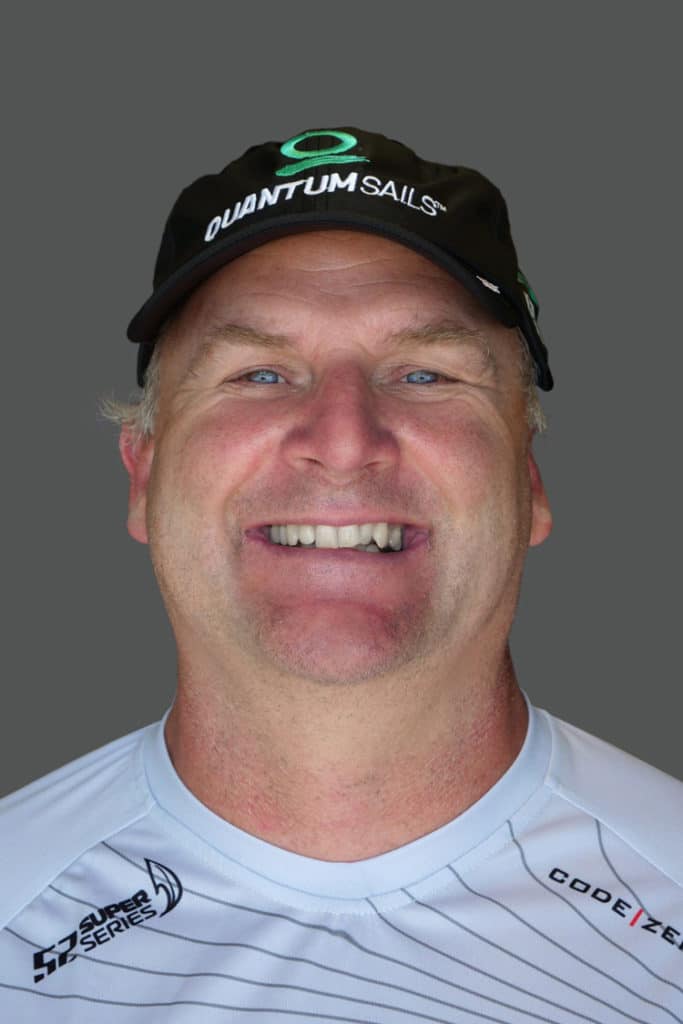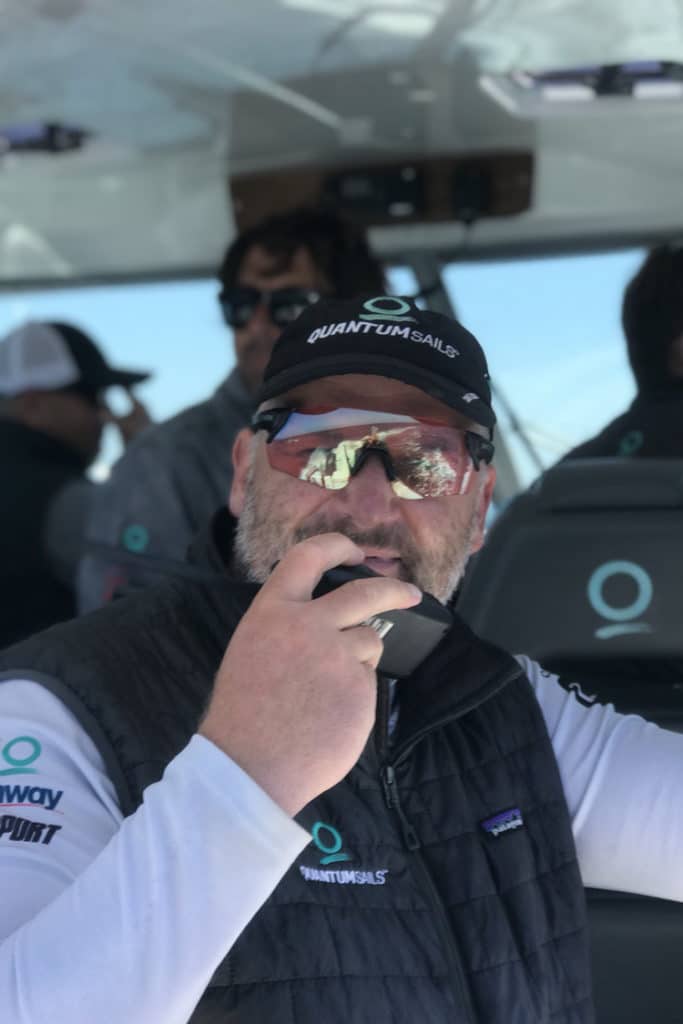It’s been a stellar few years for James Lyne, coaching teams to world championships in four highly competitive classes—Maxi 72s, Farr 40s, Melges 32s, and TP52s. This self-professed winning addict (“In 2016 I coached boats in 32 regattas, lost three of them, and I’m still pissed about that.”) who will coach the New York YC’s American Magic sailing team for the next America’s Cup, shares what it’s like to work with teams laden with talent.
Talk about the background of the people you’re working with.
Especially on Quantum Racing, from the front of the boat to the back, they’ve all raced in the America’s Cup, in either the Louis Vuitton finals or the America’s Cup. It’s almost like the range is from having participated in the America’s Cup to having won it multiple times. There are also Olympic medalists, so there’s a whole other level there. On Belle Mente, which is a more offshore-oriented program, we’ve got a lot of Volvo racers. If you chose to do the America’s Cup, and started with crews from either Quantum or Belle Mente, you’d have an awesome team to go and win it.
As coach, what do you bring to programs with this level of crew experience?
They’re all great sailors, so they don’t need me to tell them how to sail, but I can accelerate our learning. And it’s not just regatta-to-regatta but within the regatta. We go out one day, and we’re not quite so fast for the conditions. We see the same conditions coming for tomorrow, so in the morning debrief, we go over the lessons learned and take that into the next races. I feel I can make a difference in that incremental, day-to-day improvement.

How do you establish credibility with such high-level people?
You have to do that from day one. If you’re wrong on the first day with your suggestions, then you have no credibility. But you don’t go from 0 to 100 percent. It’s incremental. I remember coaching Terry [Hutchinson] for the first time in Key West in 2013 on Barking Mad. Terry gave me that look of “I am not buying what you’re saying.”
My observations are usually backed up with some data, but it’s still a leap for the sailors to add my metrics to their feeling on the boat. I’ve now worked with Terry for many years, so I get fewer of those looks. We have a level of respect and understanding, we do not see everything the same but that gives a vehicle for lively discourse and greater understanding and often quicker improvement rate. Terry is an intense person, and no one has a greater will to win, and I’m a stubborn Englishman. I like to be challenged by my teammates. They have some of the best minds in the sport, and I hope I challenge them to continual improvement.
One of the reasons they’re on these teams is that they’re all great to work with. They’re really interested in feedback, in improving in their area. So, my feedback might just be giving them some pictures and saying, “Have a look at these pictures relative to the boat or relative to a time,” rather than me telling them, “The sail’s really deep.”
Do you tend to let them draw their own conclusions?
My preference is to have the sailors draw their own conclusions, but sometimes I do tend to push them a bit because we don’t have a lot of time. If I see something that looks wrong, I’ve got to flag it.
I keep historical data records as well as minute-by-minute stuff. So maybe we do 15 beats, and the pattern is, we lose 12 seconds a beat to a certain boat. You can lose that detail within the entire racing, but when I start looking at the historical patterns, I can break that down to the point where I can say, “We have now done 15 beats, and we haven’t gained one second on this boat.” So the question is, is it because the tactician is sailing us through a longer distance? Is it less wind? Are our tactical decisions wrong? Or are we just slow in the VMG department or are we choosing the wrong mode? I provide the metrics to help tease that out.
Why do people listen to me? I don’t know if they do, but by my process of osmosis to sledgehammer, I try and get my points across. But if I’m going to suggest something, I back it up with metrics, which might include visual evidence, photos. In 2015, with Quantum Racing, we started the year with mainsails that were quite deep on cambers, quite twisted, with low traveller position, and struggled for speed upwind. We looked at photos of boats like Azurra, which started the season with a flatter mainsail and a little bit straighter leech profile. They sailed just a little bit higher all the time. We studied Azurra‘s mainsail relative to ours and started looking at the data. Through the week, we made improvements. You’ve got to start that process. So, I suppose that part of my job is to occasionally tell the emperor he’s wearing no clothes.

Do you ever have to shift out of the usual coaching role?
Yes. It happens when guys have just come off the water, it’s been a terrible day, and the last thing they want to hear is the coach telling them you did this wrong, you did that wrong. That’s when I really don’t say a lot. People are maintaining winches, dealing with sails and electronics—there’s always work going on afterwards. I don’t’ say much, just wander around and ask, “Hey, what do you think?” or “How did it go?” I’m just polling—getting the sailors’ narratives. I might hear from the sewer guy or the aft grinder. They might have the perfect little piece of information or that piece of the jigsaw puzzle. I always debrief the following morning, which gives some decompression time. It also allows me to develop a numerical story of the day as well as a visual story, using photos, which gives us better knowledge for the debrief.
What’s your role with the owners?
My role with them is really no different than any other person on the boat. They are all very accomplished sailors, great feel, huge drives to win and amazing ability to focus in the most intense of race situations. They are all integral parts of our speed team, and participate in our daily briefings. They come under my umbrella of continual improvement, so if I see an area that we can improve, maybe it’s the rate of turn in a jibe, then that gets discussed, and we move the level of driving forward.
Assembling the data and photos must be pretty time-consuming.
There’s not much sleep for me in these programs—usually 3 hours a night. And that was for around 250 days this past year. I spend my time off the water looking through data and analyzing it. I’m as obsessed as anyone else. That’s the thing at this level. If you’re going to work with people like Terry, you’ve got to be just as obsessed and just as driven.
I suppose the rule is, never good enough. We win all three races that day, and I’m still hammering away at the guys for the things we didn’t execute well enough. That’s that carrot that’s always in front of you.









